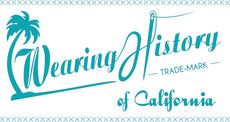wearinghistory
Printed Pattern- Circa 1919 Draped Dress- 1910s- WWI- Bust 36"
Couldn't load pickup availability
Wearing History Archive Couture Pattern #AC129
Printed Pattern. Mailed to You!
ADVANCED/EXPERT DIFFICULTY- This one is very challenging, but results in a period accurate "armistice" dress. It looks simple, but construction is very complicated. Be forewarned that this is a challenge! PLEASE READ ALL DESCRIPTION!
Circa 1919 Dress Pattern from the original period source
One Size Only- Size 36" Bust, Waist 27", Hip 38"
JUNIOR'S (Misses) Size. MOST figures will need significant alterations.
This dress features an optional foundation lining, over which is a bodice with a vestee center front that fastens under the collar. A collar accents the neckline. There are three sleeve options included- a short sleeve accented with a decorative band, a 3/4 length sleeve with a bias cut band, or a long "wing" sleeve with a fitted cuff.
The skirt is a big open "loop" on one side, and a hemmed drape on the other side. The skirt opens at center front and laps to one side for closures. The button lap at back is non-functional.
The bodice is created first, then the skirt is created a "mounted" onto the bodice at a raised waistline. The waist is finished with a sash tacked in creative positions to cover the waist join.
--- ADVANCED/EXPERT Difficulty ---
This pattern is extremely challenging, even for experienced sewists.
Included are original period instructions that are illustrated but still sparse. You may wish to have a sewing book handy for detailed techniques. This is complicated construction with a dress built over a bodice lining with hidden closures.
ABOUT THIS PATTERN:
This is from a rare original Butterick pattern from 1919 .
Archive Couture patterns are an exercise for one’s skills, and an adventure into understanding sewing from antique patterns. Please read more details about this pattern below.
36" bust, 27" waist, 38" hip.
Original period yardage is given in the listing images.
- - WHAT IS INCLUDED WITH THIS PATTERN - -
-A clean, computer drawn pattern of the basic pattern shapes needed to create the garment illustrated. Markings are labeled.
-Very basic, original, and vague illustrated sewing instructions
-Additional pages of written clarification of original sewing instructions, complimented with a few extra sketches for clarity.
-Additional PDF file with scanned excerpts from 1910s-1920s sewing manuals to help with construction for this pattern.
- - What Is NOT Included With This Pattern - -
As per the "About Archive Couture Patterns" paragraph below, what is not included is standard of patterns of this age.
-NO finishing techniques
-NO button placement. You must get creative with your trims.
-NO instructions for closures
-NO sash piece. You must draft your own (none was originally included).
- - About Archive Couture Patterns - -
Archive Couture patterns are of Advanced Difficulty and recommended for those who are familiar with putting patterns together with little to no instruction, and who are familiar with pattern alterations for fit. These patterns are have been taken from original historical source materials. These sources may include diagrams, overlapping patterns in magazine issues, early tissue paper patterns, or other period source material. The source material was used by experienced home sewists, dressmakers, or tailors of the period from which they are derived. These patterns were only available only in single sizes, with details such as grain lines or buttonholes most often unmarked. Wearing History has clarified markings (where given) and supplied tips for working with these historical patterns. You may choose to have a modern or period sewing book on hand to help with construction and fitting. Archive Couture patterns follow the period shapes of the original period source material, maintaining the historical accuracy and fit of the completed garment. Fitting a muslin mockup is strongly recommended, as all garments were meant to be worn over period foundation garments or corsetry. Fit and proportion of these patterns are different than modern costume patterns and may require alteration to fit your modern body, even when wearing period style foundations. Several mock ups may be required to achieve ideal fit. We believe these patterns should not be lost to time or languish in historical archives, but be made available for historical sewing enthusiasts of today.
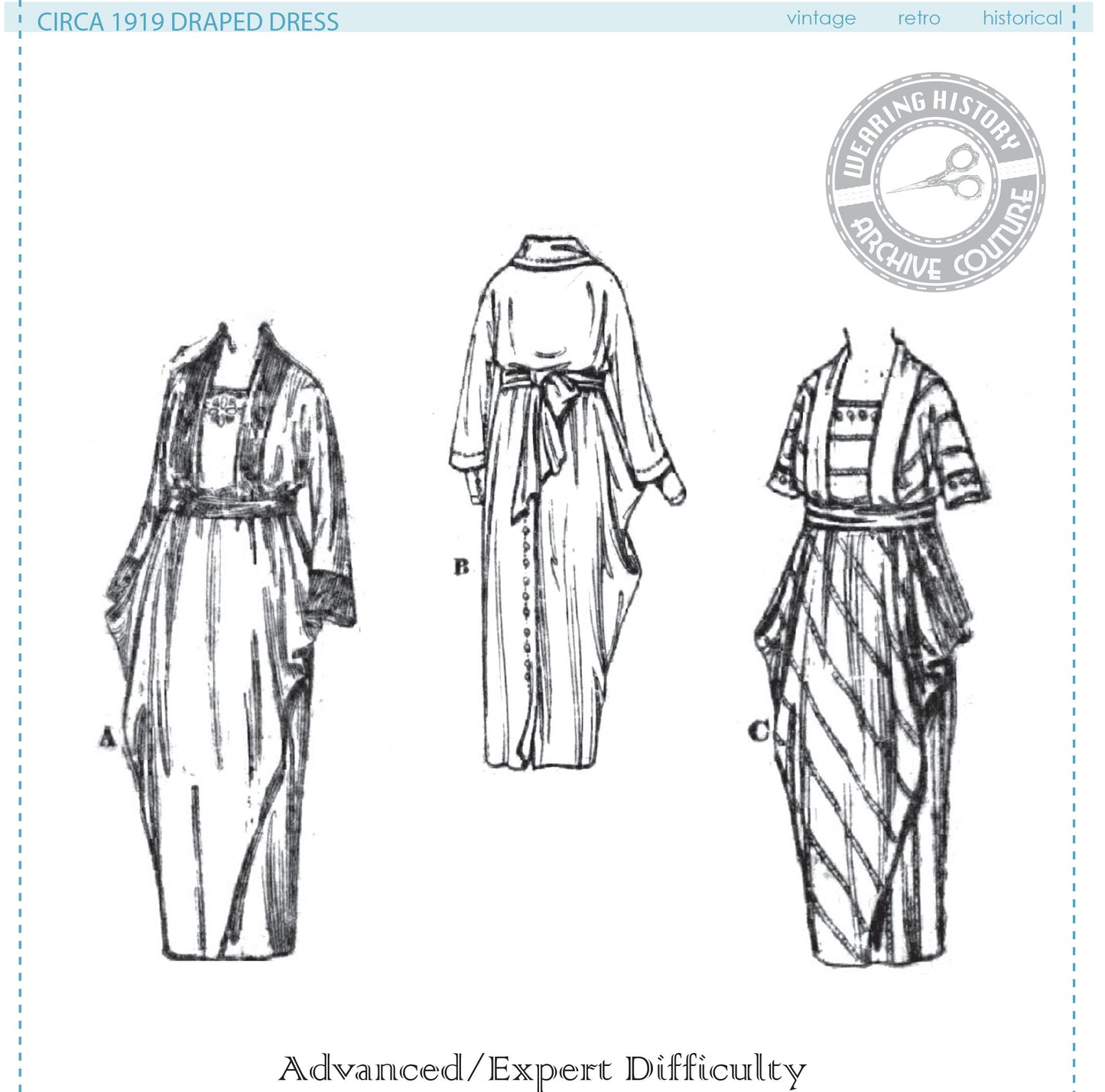
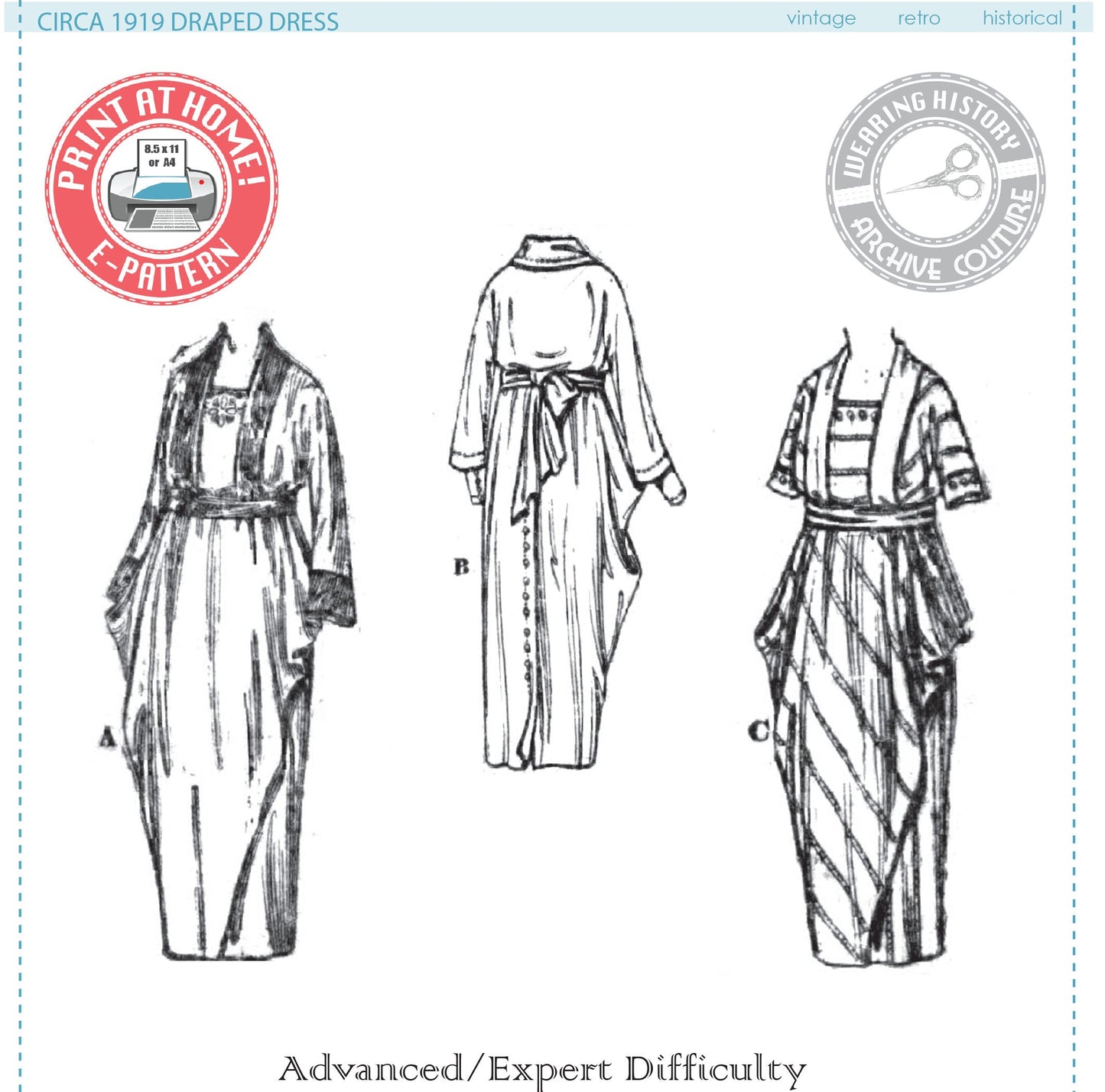
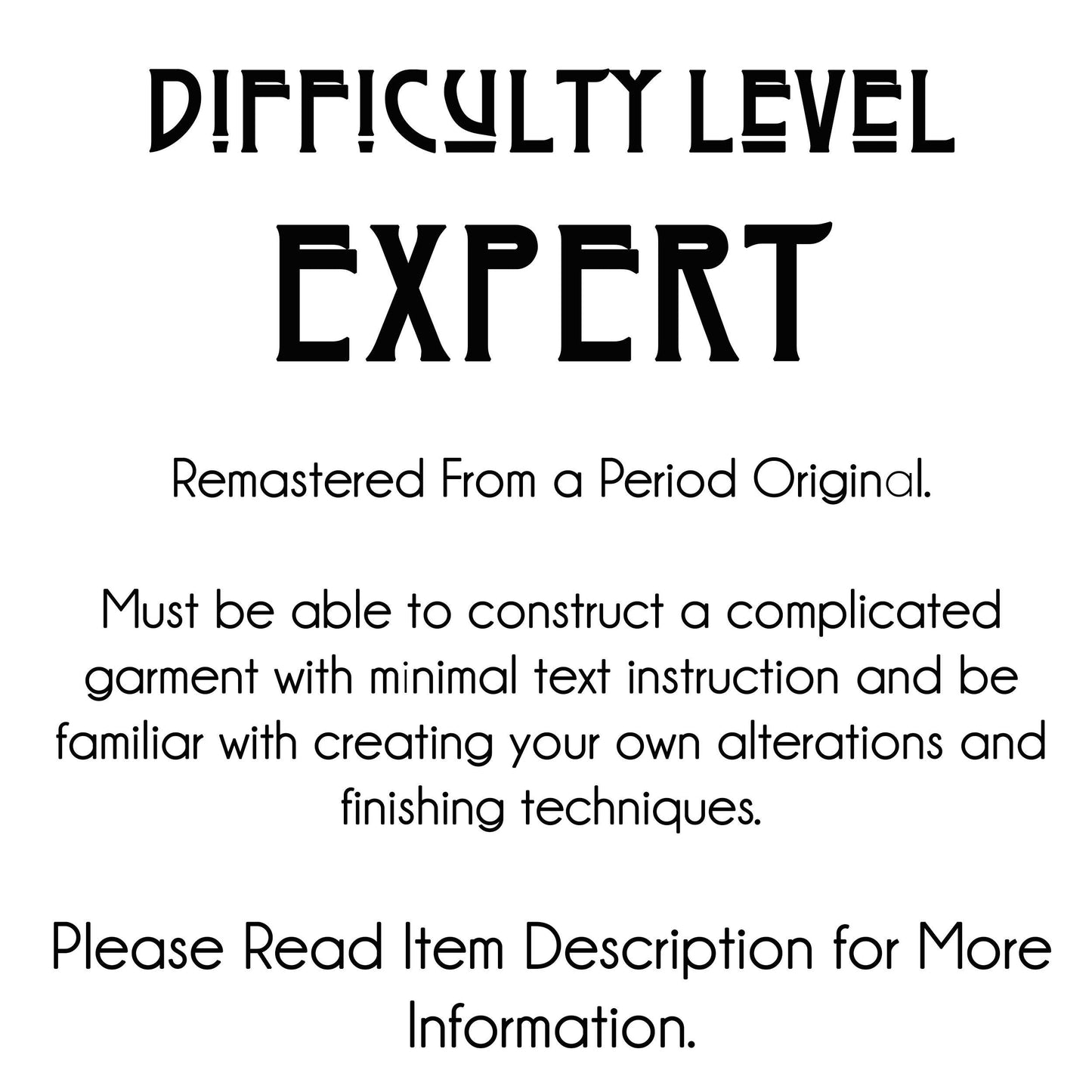
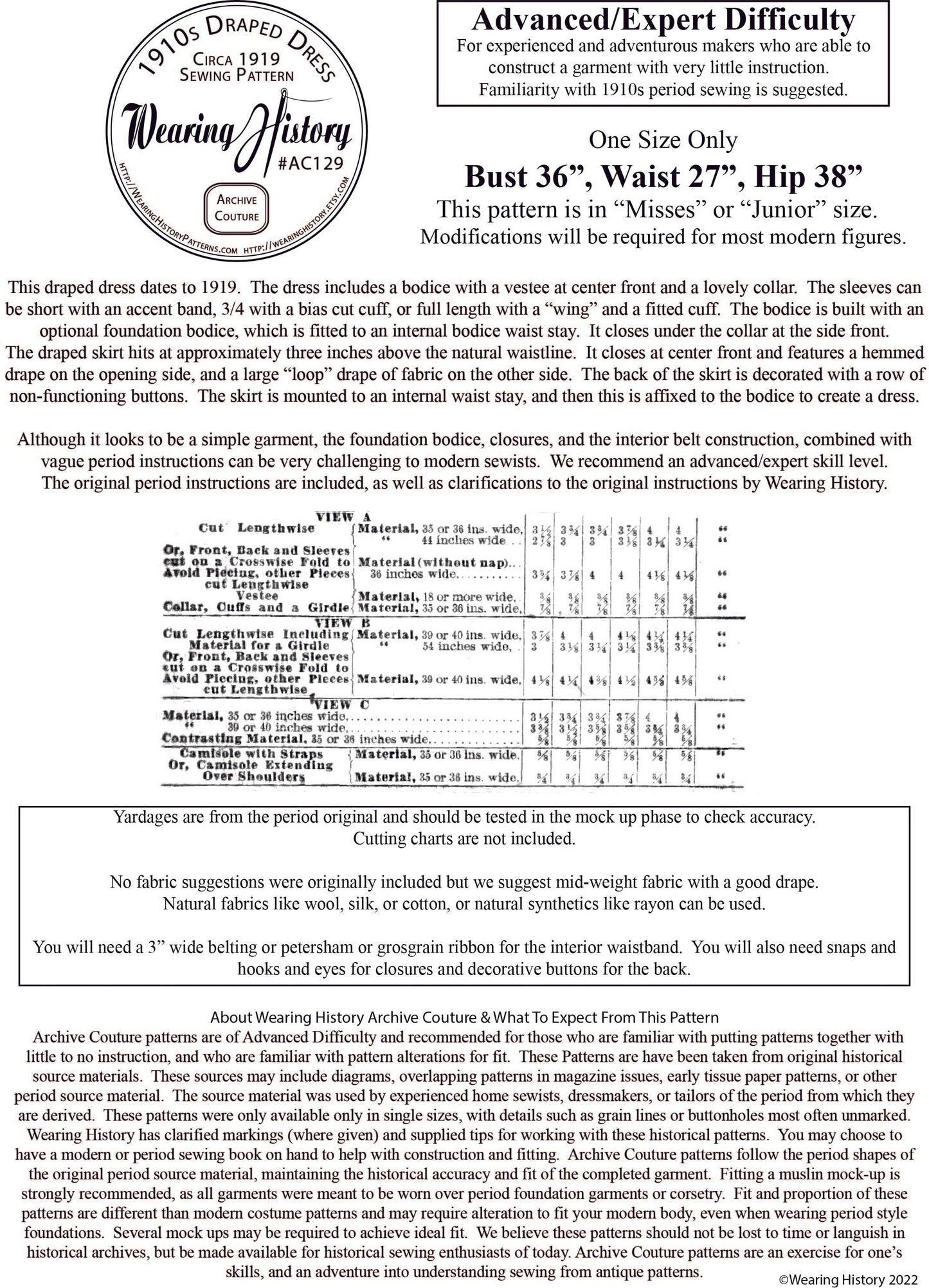
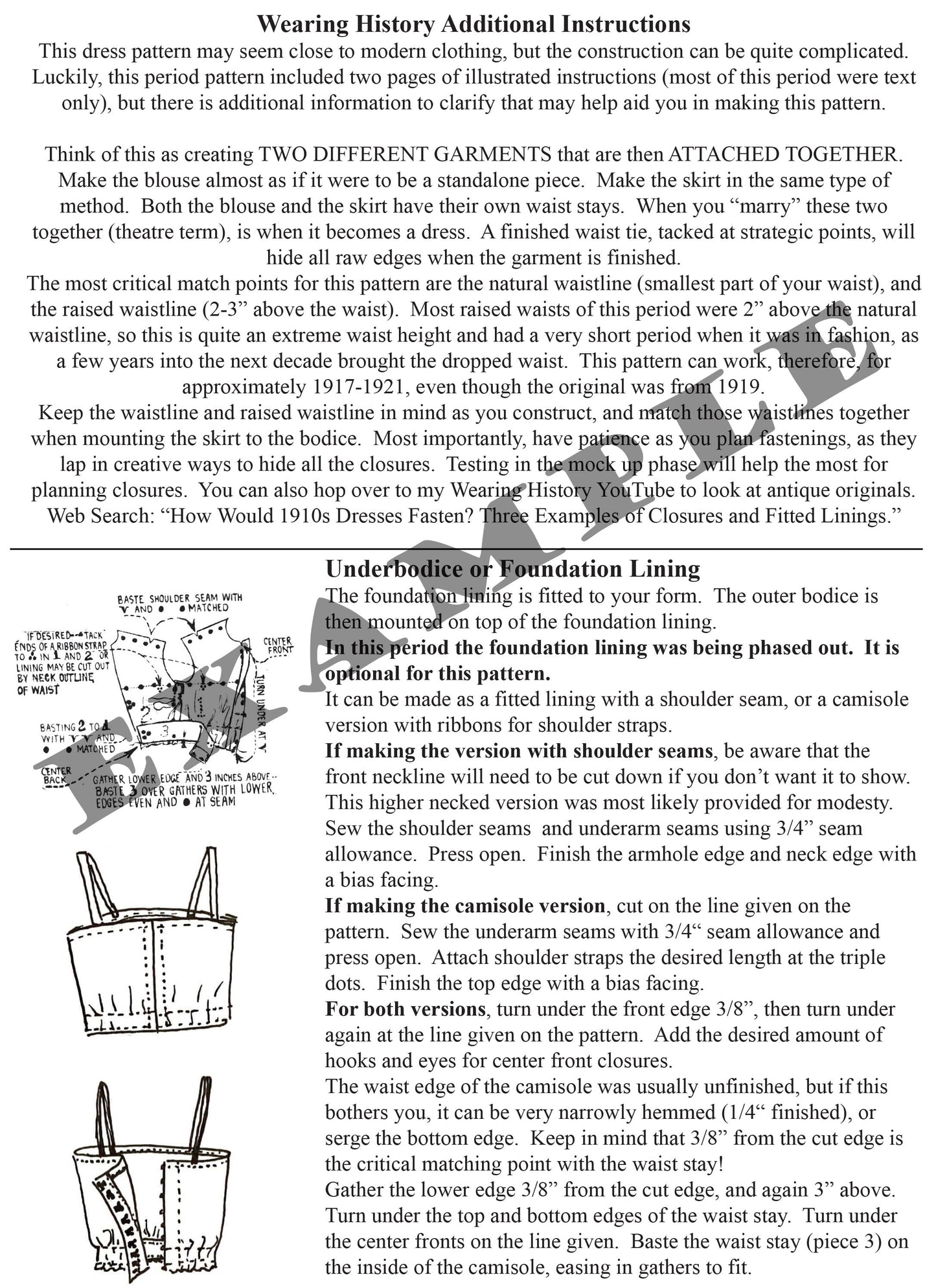
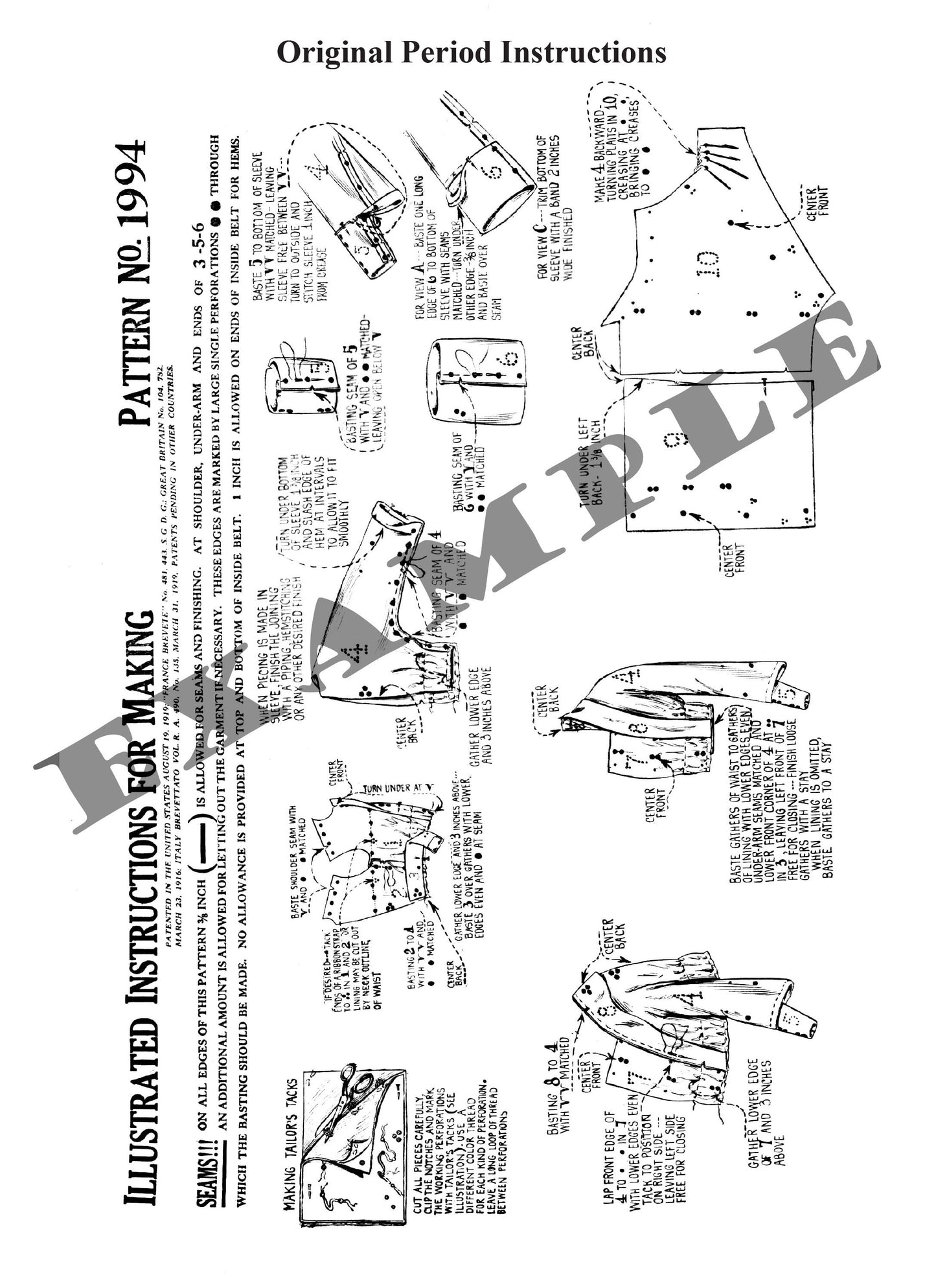
-
Shipping
PRINTED PATTERNS are mailed to you and already printed on big paper. Shipping is calculated at checkout. Please allow up to one week for orders to ship.
E-PATTERNS and E-BOOKS are digital download PDF files you save and print yourself or have printed for you. These will not mail to you. You download them yourself to your computer after checkout.
We do not sell to the EU or the UK on this site, as we aren’t set up for VAT collection. Please shop on Etsy if you’re in those countries. Http://wearinghistory.Etsy.com
-
HOW TO USE E-PATTERNS
Most patterns come as both A4/US LETTER and A0 size. You will need ADOBE READER, a free program, to print your e-pattern.
For A4/US LETTER paper:
Open the "READ-ME-FIRST" File for instructions on printing and piecing your pattern. Print the PDF file on your home printer, cut off on the lines given, and tape them together. Then you cut and use your pattern just as you would a normal home sewing pattern.
For A0 size:
This is sent away to a copyshop and printed on big sheets for you. We print A0 pattern sheets at great prices at Pattern Printing Company
-
Returns
No returns or exchanges are accepted. Please be sure of your pattern size and type of product, either physical or digital, before purchasing.
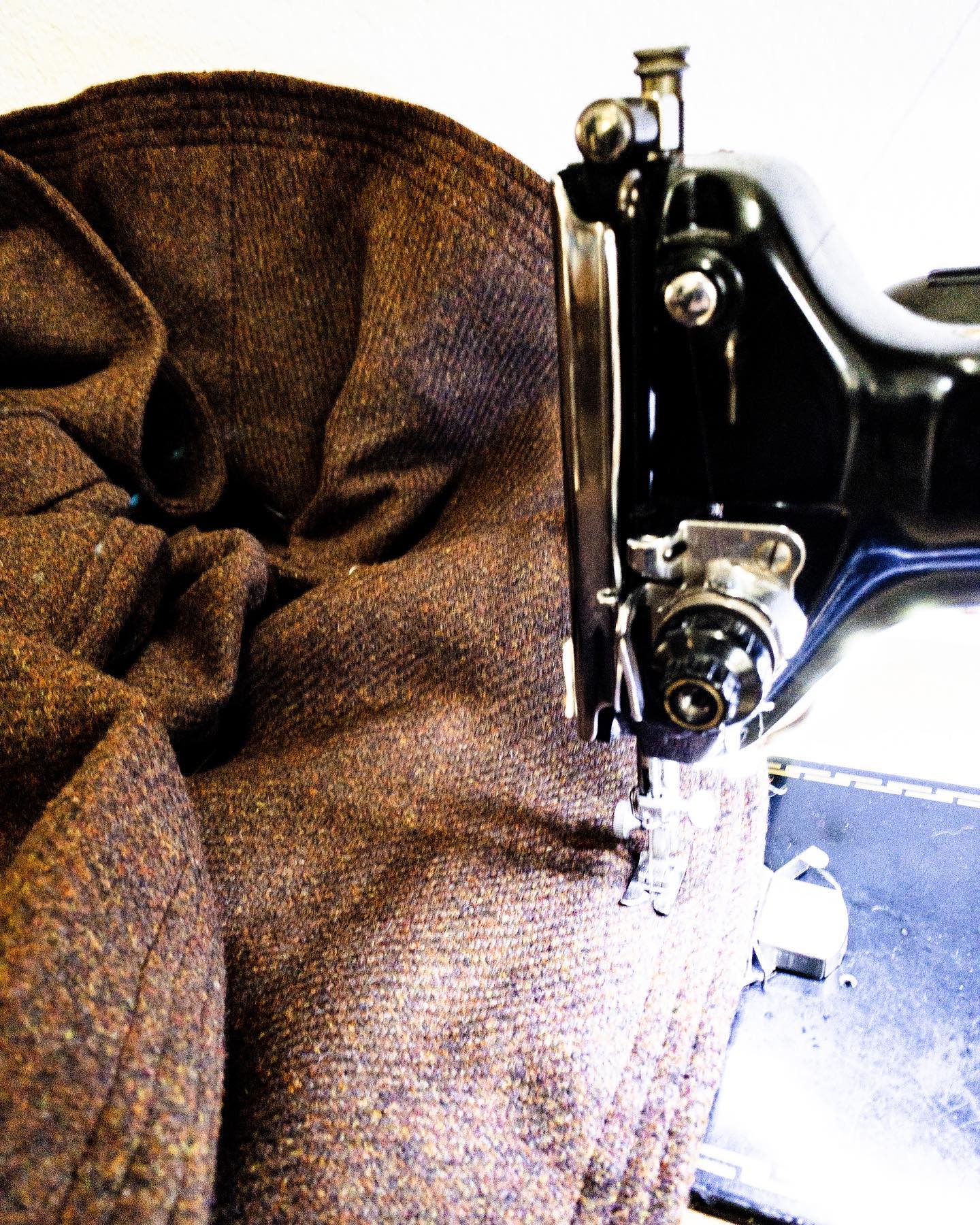
Carefully Researched
All of our patterns are carefully researched and based on either public domain materials or our own creations. Lauren applies her decades worth of practical application of historical fashion and technical skills when making these patterns, and often supplies watch points for making. External helps are available on Wearing History on YouTube and on Wearing History Blog to help you learn to sew history.
